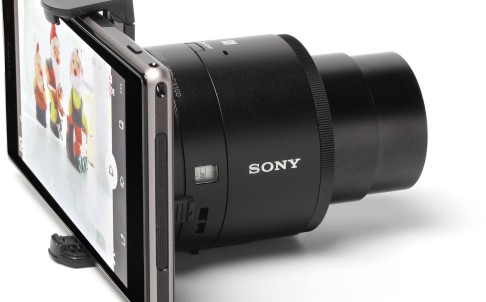- Joined
- Jul 23, 2012
- Messages
- 266
- Points
- 0
How to turn your phone into a professional movie camera
PUBLISHED : Thursday, 25 September, 2014, 4:03pm
UPDATED : Thursday, 25 September, 2014, 4:03pm
Jamie Carter [email protected]

Sony QX100 camera.
Is there anything that smartphones can't do? Citizen journalism has so far been all about eye-witness reporting using Weibo, Twitter, Skype and other forms of instant communication. But the quality has been poor, with shaky, low-resolution video and poor sound.
It doesn't have to be this way, as journalists and broadcasters are now finding out. Where once they carried bulky cameras, microphones, dictaphones and heavy television cameras, many are quickly ditching most of that to rely on just a smartphone and a few accessories.
By adding a few choice gadgets it's increasingly easy to create your own all-in-one TV studio. With the web predicted to move from the written word on web pages to a medium largely based on short videos (it's a seismic shift that's already under way on social networking sites), it's time we all learned the tricks of the trade.
The first area to work on is photography. Nobody wants to carry around a big D-SLR camera, and now there's no need. Most smartphones have good built-in cameras that reach eight megapixels, and there are hundreds of apps that can give your photos a professional look.
Big Lens for the iPhone can replicate a D-SLR camera's results. It allows the focus to be tweaked via a smartphone's touch screen to create depth of field in images, and allowing adjustments to the aperture.
But a smartphone's fixed lens is often unsuitable. If you want to zoom in while shooting either images or video, try Sony's QX100, which is basically a 20-megapixel camera built into a F1.8 lens. It uses a CMOS sensor, so is much better than a smartphone's optics for shooting in low light.
If you're capturing an event, a wider angle is just as important. The Olloclip, a tiny 23g anodised aluminium lens clip that slides onto the corner of an iPhone 5S to upgrade its optics will do the job.

Olloclip lens clip.
One orientation gives an angle twice the width of the iPhone's built-in camera, the other offers a fisheye effect (for a 180-degree field-of-view), while two macro modes give extreme close-ups from 12mm and 18mm.
Equally as important for photo and video from a smartphone is a tripod. Lightweight tripods made from aluminium or carbon fibre are available from brands such as Manfrotto and Vanguard can weigh as little as 1.5kg.
A tripod is also handy if you want to do direct presentations. Various wireless remotes - such as the Muku Shuttr and Snap Remote (which also comes with a tiny snap-off detachable phone stand) - let you operate your smartphone from afar.

Smoothee hand-held stabiliser.
For action shots, the Steadicam Smoothee hand-held stabiliser is unmissable. Available for the iPhone 5S and the GoPro Hero 3 action camera and built around a mono-frame metal structure, Steadicam Smoothee adds agility and lets you take moving action shots without any camera shake.
Video editing is best done on an app such as FiLMiC Pro.
What about sound? Smartphone microphones are poor, so attach something like the iRig Mic handheld microphone to your smartphone for massively more impressive results. It's good for interviews, pieces to camera, commentaries, and also for podcasts.
We're all walking around with advanced video capture devices in our pockets - we just need to learn to use them more professionally.


